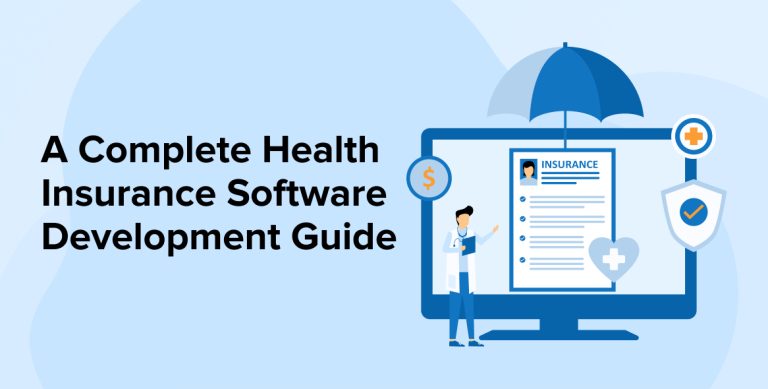
According to Allied Market Research, It is anticipated that the market for health insurance will exceed $4.15 trillion by 2028. The private health insurance industry must adopt new technologies if it is to fulfill the rising demand for its services and the high standards of its customers.

Because of this, health insurance software development is a demanding subject for health insurance providers serious about expanding their current operations.
As a healthcare software development company, we take this opportunity to share more insight into the overall healthcare insurance software development process and its enormous benefits and features.
1. What is Health Insurance Software?
Health insurance software is an application that helps manage and simplify several aspects of health insurance. As a result, insurance firms can run more efficiently. Enrollment, processing of claims, verification of eligibility, invoicing, and customer support are some important activities that healthcare insurance software can execute.
Health insurance software is designed to facilitate and simplify medical insurance services and aids the healthcare industry. The foundation of the medical insurance software is an agile framework that allows for better transaction processing and scalability. Not to mention that healthcare is one of those sectors that cannot afford to make mistakes, thus any API connection needs to be as flexible as possible. This ensures full interoperability and links all enterprise-wide systems.
The healthcare sector needs a secure system with minimal room for mistakes to systematically preserve human life and provide comprehensive societal well-being. This is where the healthcare insurance system comes into play. Healthcare software development must be effective since it automates systems and improves the efficiency and security of healthcare services.
The health insurance sector is currently experiencing a surge in technological adoption to improve efficiency and effectiveness. Health insurance software is a tool that helps healthcare businesses run more smoothly and efficiently while also offering medical services to patients.
The following are highlighted by the concept of health insurance software development:
- Customized functionality to address specific issues within the health insurance industry.
- Gathering information from customers and evaluating it.
- Follow all necessary laws and regulations.
One of the most important goals of health insurance software development is to create a solution that can optimize interactions among all parties involved, including clients, medical suppliers, and insurers. For what reasons does it benefit the healthcare industry?
- Workflow automation.
- Easy, simplified processes.
- Decision-making process helping.
- A better experience for the customer.
2. The Benefits of Health Insurance Software
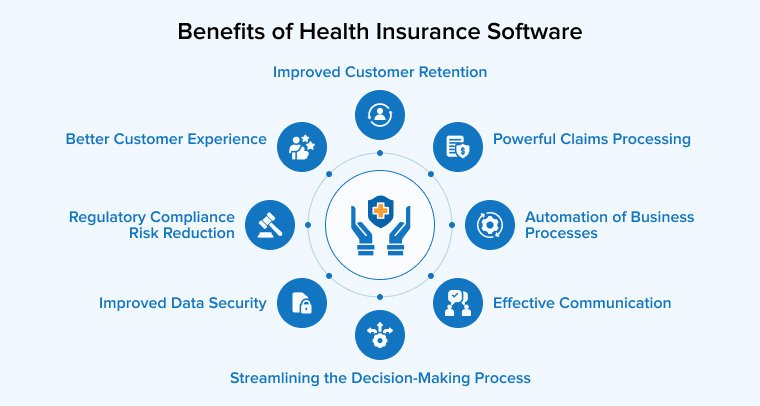
Understanding the benefits of health insurance software solutions is an important first step in determining whether or not to invest in their development.
2.1 Automation of Business Processes
Coordination with patients and medical facilities, intricate financial management, etc. are all part of a health insurance company’s day-to-day operations. Human resources, finance, and security are all examples of typical corporate procedures that fall under this category. Simplifying all the processes calls for a suite of software solutions.
There are some more benefits to automating procedures. For instance, the system enables real-time decision-making by automatically providing all the necessary health insurance information for each claim, and the claim’s legitimacy is checked. This capability ensures the possible use of the available resources.
You can save a lot of time, energy, and money, and make sure your customers are happy by developing customized health insurance software. This approach also helps you limit the danger of human mistakes.
2.2 Better Customer Experience
Customers can benefit from well-designed health insurance software with an intuitive user interface. Policy details, claims tracking, and help resources may all be easily accessed using this method.
In the past, a lot of insurance-related stuff was done on paper. This method was used to cause a lot of trouble. Clients had several complaints, one of which was that the essential documents were filled with technical language. There are serious worries about ambiguity, even among insiders. Fortunately, this is no longer the case. Today, insurance applications allow users to view their plan’s data in a user-friendly dashboard.
2.3 Effective Communication
Timely processing of insurance claims is dependent on the ability to communicate effectively with patients, and healthcare providers. A customized health insurance app can streamline interactions among patients, healthcare facilities, and insurance companies by serving as a hub for all three parties.
In the event of an emergency, all parties can be contacted simply and promptly through a centralized insurance platform. Additionally, for future audits, a health insurance app can safely retain and arrange messages.
Medical insurers should incorporate many channels of contact into their health insurance applications, such as mail, online chat, video conferences, chatbots, and a phone number that users may call to reach the insurance company’s helpline.
2.4 Powerful Claims Processing
Errors and delays in processing claims can be greatly reduced by using health insurance software. The algorithms used in healthcare insurance software make it feasible for insurance firms to construct complex rules and scenarios that cover the vast majority of potential outcomes. This advancement eliminates the need for specialists to be stationed in an office to conduct thorough analyses of the primary data.
2.5 Improved Customer Retention
One of your key objectives should be to maximize client retention rates, as it can be far more expensive to acquire new customers than to keep existing ones. Improved customer satisfaction, also encourages them to share their positive experiences., The outcome of expedited insurance claim reimbursement and simplified procedures. Additionally, this helps spread the word about your company and attract more users.
You may save money and make your operations more consistent and efficient by switching to a contemporary health insurance management system from an older or more manual one. This is essential if you want to expand your company strategy and provide remote home care services.
2.6 Streamlining the Decision-Making Process
Supporting decision-making efforts are the automation features that a health insurance software system can offer your health insurance business.
Daily a health insurance organization must sort between legitimate claims and fraudulent ones. The capacity of the organization to pay legitimate claims can be compromised by fraudulent claims. Since people need medical attention quickly, health insurance companies can’t afford to delay claim payments.
Health insurance agents may make more informed judgments with the use of software that collects and analyzes all relevant claim information in real-time. This allows companies to streamline their decision-making process.
Health insurance software also cuts down on the standard quantity of documentation and phone calls involved in settling claims, which is a major time saver for everyone involved in the claims settlement process.
2.7 Regulatory Compliance Risk Reduction
With the help of compliance capabilities, health insurance software can make sure that all of the industry’s complicated rules and regulations are followed. This safeguards information privacy and security, reduces the risk of fines or legal trouble, and decreases compliance-related risks.
2.8 Improved Data Security
For a healthcare provider, security and compliance with regulations are just as crucial as the experience of the end user. Due to the sensitive nature of the patient and provider records, the utmost precautions must be taken to prevent data breaches and theft. To improve teamwork and productivity, advanced technology is necessary.
3. Features to Consider for Health Insurance Applications
A health insurance company’s day-to-day operations include several tasks. What follows is a list of features to think about when seeking health insurance apps.
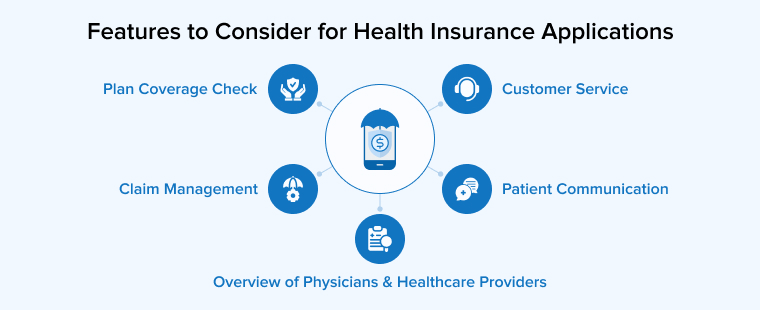
3.1 Plan Coverage Check
Medical records management systems should clearly outline each insurance plan’s coverage details. It will assist clients in selecting the plan that suits them the most. In addition, health insurance software ought to offer a calculator to help users predict their medical appointments’ costs as part of the insurance administration features. Because of this, people will be able to understand which medical procedures are covered by their insurance and which ones aren’t.
3.2 Claim Management
User should be able to see all the claims that have been opened, categorize them according to certain criteria, and then repay them using secure in-app payment methods. Emerging innovative business models alongside ever-increasing regulatory demands. Therefore, tighter coordination in the areas of claim processing and comprehensive analytics. For that reason, this is a crucial aspect to consider while making a health insurance app.
The processing of sensitive insurance-related data necessitates the use of secure document storage and effective claim management access. This includes a comprehensive role-based access mechanism and robust encryption to protect the information.
3.3 Overview of Physicians & Healthcare Providers
A user-friendly feature of health insurance apps would be to give a comprehensive list of healthcare providers and the associated consultation costs. Users should also be able to sort providers by specialty in the program.
3.4 Patient Communication
The health insurance application should have features that allow patients to track their vitals and report any obvious issues. Sending reminders, generating alarm alerts, and offering a plethora of other services.
3.5 Customer Service
To effectively address client concerns and complaints promptly, health insurance applications should offer live chat assistance or a comparable service. Integrating an app with a patient support service that allows users to record recommendations, test results, etc. is the gold standard.
4. Health Insurance Software Development Challenges
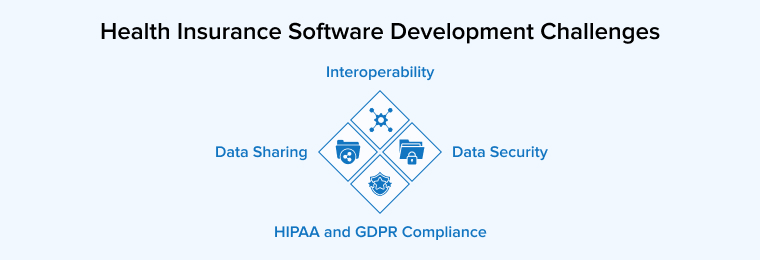
The creation of health insurance apps presents several difficulties, despite the numerous advantages of such software. If your company wants to be ready, it has to be aware of the obstacles that come with developing health insurance software. Some of the most significant challenges to your business are as follows:
4.1 Data Sharing
A standalone application is not particularly noteworthy. To be truly useful to users, it must be able to easily interchange data with other platforms. Better user outcomes, enhanced operational procedures, and easier data sharing across software platforms are all benefits of API integration. A pleasant end-user experience for consumers is guaranteed by API integration, which easily utilizes current customer data to support claims.
In healthcare, there is a wide range of applications and data formats used, making it difficult to ensure safe data transmission. To build a health insurance app, it is essential to hire trustworthy healthcare software developers who can guide you every step of the way.
4.2 Data Security
Data exchange is crucial for insurance software to function properly and provide value. However, ensuring data security is equally critical, because we rely on exchanging data.
The sensitive nature of the data being exchanged and kept makes data security much more vital in health-related initiatives compared to other development projects.
If you follow the guidelines laid down by HIPAA and other laws, your health insurance software will be secure. This is because the majority of these requirements concern data security.
4.3 HIPAA and GDPR Compliance
When creating health software solutions, it is important to keep in mind the standards set by HIPAA. Security and privacy rules, emergency data breach coverage, access to secure medical documents or health information, and protection of patient’s healthcare data confidentially are all aspects of compliance that must be met.
4.4 Interoperability
It might be challenging to integrate with third-party apps, electronic health records (EHR), and current healthcare systems because of the different data formats and standards (such as HL7). Unfortunately, it’s not uncommon for each state and even each county to have its structure.
5. Health Insurance Software Development Process
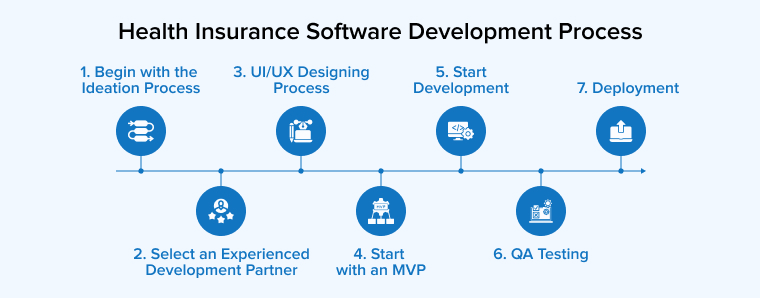
5.1 Begin with the Ideation Process
It is recommended to proceed with certain initiatives only when you have a clear concept. However, having a concept understanding isn’t enough to achieve success; rather, one must integrate several concepts into a cohesive framework that meets the demands of the end users.
At this point, what are you supposed to do? We think the following are the most important things to do to succeed:
- Project objectives, needs, and features should be defined in collaboration with stakeholders. Misconceptions regarding technologies are common among many people working in fields unrelated to information technology. The best method to figure out what works and what doesn’t is to talk with your IT partners; even if you think something is reasonable, they may have a different perspective.
- To succeed, it’s important to find your target audience, study the competition, and do some market research. The market analysis is an additional critical component. There are three aspects of your product that you must know: who will purchase it, who your competitors are, and which niche provides the least amount of competition.
5.2 Select an Experienced Development Partner
Step one is to choose a trustworthy healthcare software development technology partner; and evaluate their background, experience, and reputation before making a final decision. Developing health insurance products requires great calls for a great deal of experience and knowledge. Outsourcing, employing a specialized staff, or collaborating with an in-house development team are some of the available approaches.
5.3 UI/UX Designing Process
What are the things you should think about doing next? Here are some suggestions that every health insurance software developer might consider:
- Design visually beautiful and user-friendly interfaces. The simpler, the better. Your app ought to be flawless if you want to capture maximum attention because many people evaluate based on first impressions.
- The development of efficient and user-friendly designs begins with the creation of wireframes, prototypes, and user flows. There is no such thing as excessive testing. Rather than building a UI from the ground up is a poor idea; instead, utilize wireframes to see what features would appeal to consumers the most.
- To maintain responsiveness, accessibility, and a fluid user experience across all devices. Because people with disabilities often look for more sophisticated insurance plans, create an app that is accessible to them.
5.4 Start with an MVP
With appropriate technology and platform alignment, move towards MVP development. Make a minimal viable product (MVP) before diving into full-scale development. The key is to see your solution in action. Prioritize the most important features, build a minimal version of the product, and then send it out to users for testing. By doing so, you may determine whether there is any merit to proceeding with development.
5.5 Start Development
- Use an agile and iterative methodology to build the software.
- Development should be broken down into sprints, with each sprint focusing on building key features and regularly testing and integrating functionality.
- To make sure everything is in line with demands, work closely with stakeholders and developers.
5.6 QA Testing
When creating software for medical insurance, developers often have very little room for mistakes. Missed payments are one consequence that can arise from issues with insurance software. Many customers will undoubtedly stop utilizing your service because of these problems. To ensure that consumers are given the utmost attention, quality assurance is very necessary.
The first step is to find and fix any faults, flaws, or performance problems by doing thorough testing. As a second step, test your app in various environments using unit testing, integration testing, system testing, and user acceptability tests to ensure it functions as expected. By confirming that the program works as it should and meets quality standards, your project should be a success.
5.7 Deployment
What are the things to think about when you get to this level? You should carefully consider the following points:
- Get the program ready to go live by setting up the necessary servers, databases, and networks.
- Create a test environment to run final tests in.
- Make sure the program goes smoothly from development to live operation by deploying it to the production environment after it’s authorized.
6. Conclusion
It is not easy to design software for the healthcare industry. Researching the rules and regulations that apply in your targeted country is an important first step. Make sure you create a solid base of healthcare providers and consumers by implementing the app’s primary features first throughout development.
Get in touch with us if you need a competent crew for health insurance software development. Your product will be of the highest quality and will fulfill all specifications thanks to our developers.


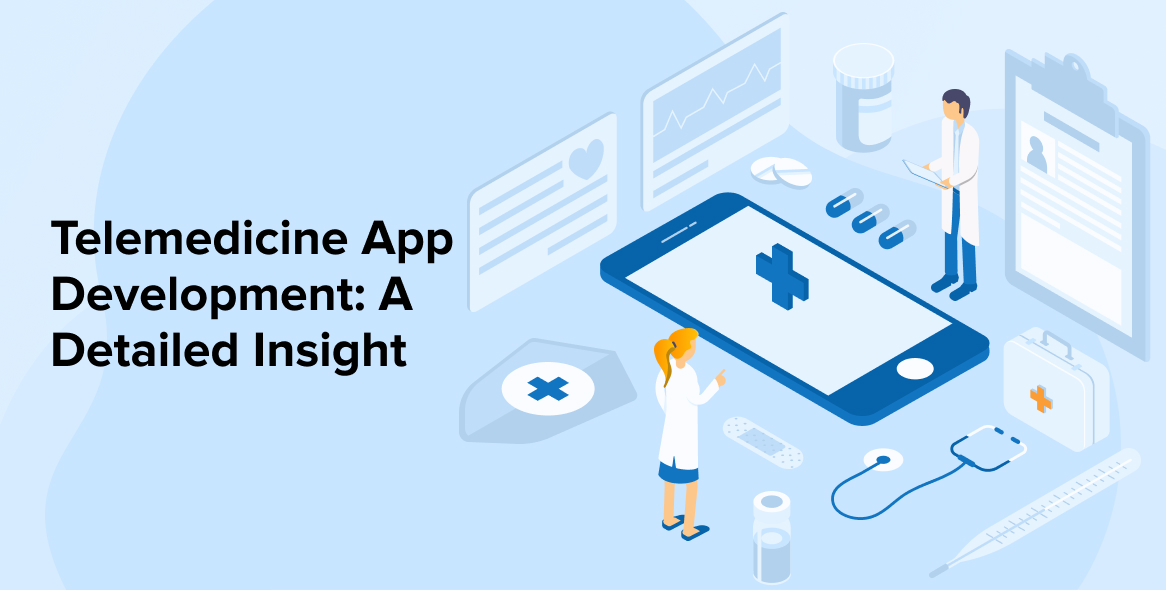
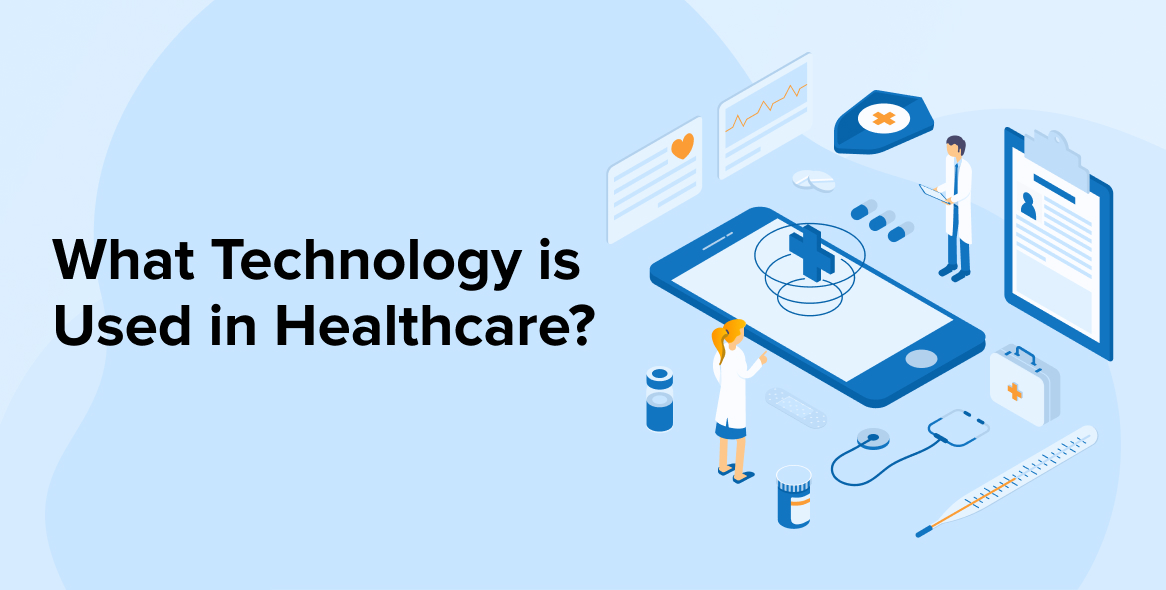
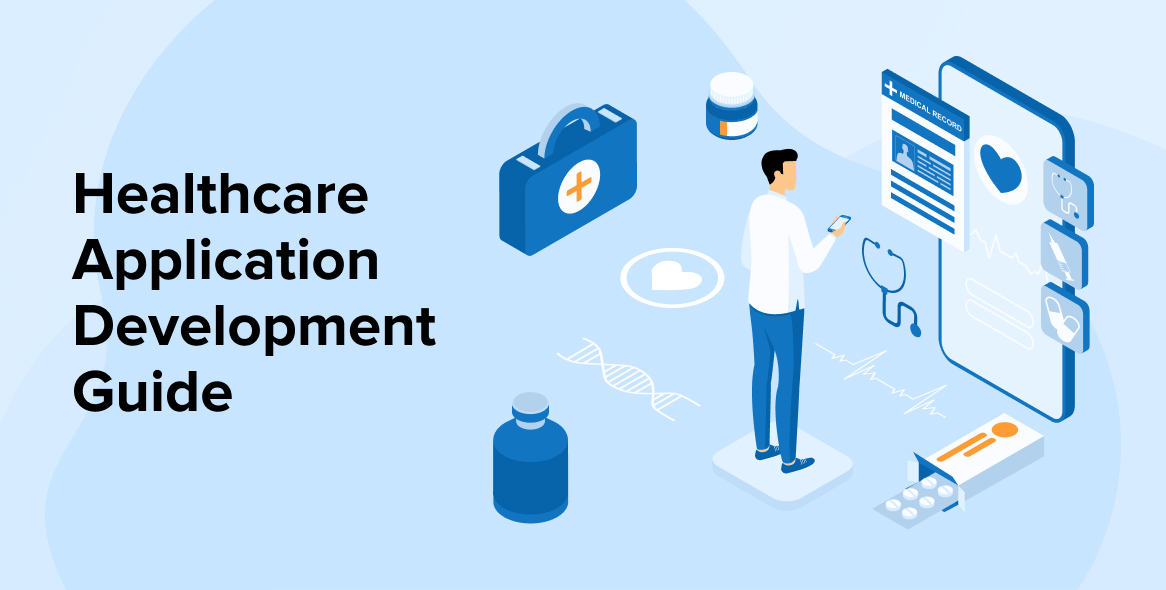

Comments
Leave a message...